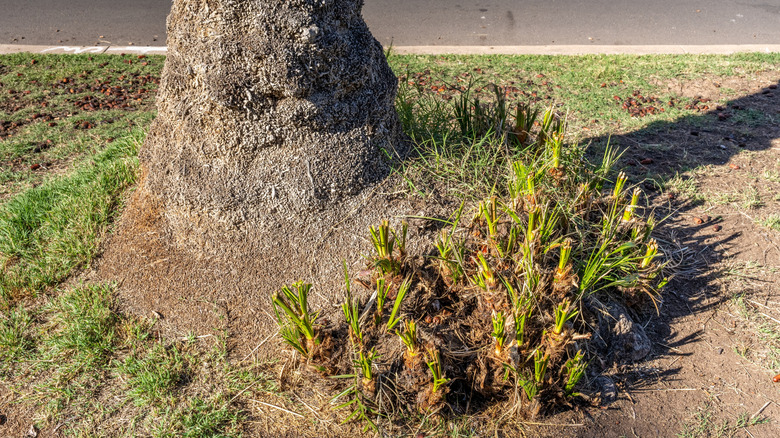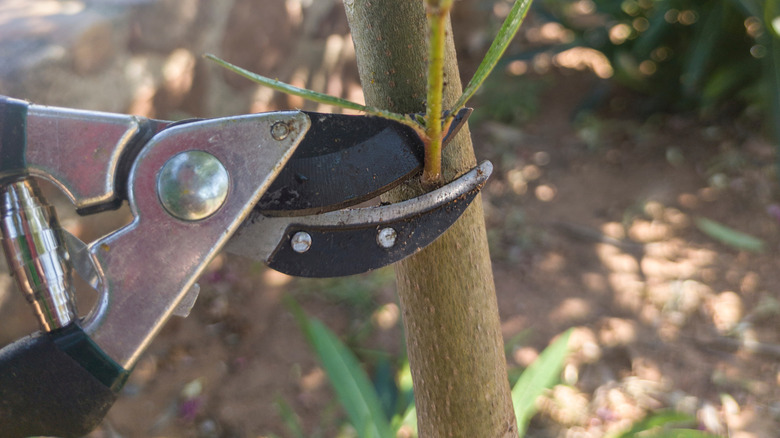The Cute Plants You Don't Want To See Growing At The Base Of Your Tree
Who doesn't love cute baby plants? Unfortunately, if you see what appear to be miniature tree branches growing straight up at the base of your trees or shrubs, you probably don't want these around. They're called suckers, and in addition to making your tree look a bit odd, they also sap its energy and health – leaving you with a tree that is more prone to disease and less likely to produce flowers and fruit.
The suckers that you see by your tree aren't actually separate plants; they're growing from the tree's roots. If you notice suckering around your trees, then your best option is to remove them. Plants like roses and fruit trees that are often grafted onto a different rootstock can also be quite prone to suckering. So you may need to pay extra attention when cutting your rose bushes to ensure you're not accidentally leaving the rootstock suckers or removing your desired roses.
You can certainly try to cut off the young suckers when you see them. Simply use a pair of hedge loppers to get the job done. If there is a lot of suckering, you can consider using an herbicide or other chemical-based option — like a growth regulator or desiccant. If you opt for a chemical control method, be sure to read the label carefully and follow all instructions. Not all herbicides are appropriate to use on suckers, and some may even damage your tree.
Preventing suckering on trees
While some trees (such as dogwood, hawthorn, and crabapple trees) are just naturally prone to suckering, there are some things you can do to limit it. One major cause of suckering is stress or damage to the tree. In some cases, this can even go back to how the tree was planted. A tree that was planted too deeply is more likely to become stressed and prone to suckering, so be aware of that when adding new trees and shrubs to your yard.
Make sure your tree is healthy and take some extra care when trimming your grass around the tree so that you don't accidentally nick the trunk or roots. The less damage your tree gets in general, the better. This special care can go a long way towards cutting back on the number of suckers produced.
Pruning can sometimes cause suckering as well. This is common if you remove more than a third of the tree or shrub's growth at once or if you top the tree. Unfortunately, sometimes, pruning those suckers at this stage can make the problem worse, especially when you wait until the suckers are older and already woody, so removing them promptly is essential.

